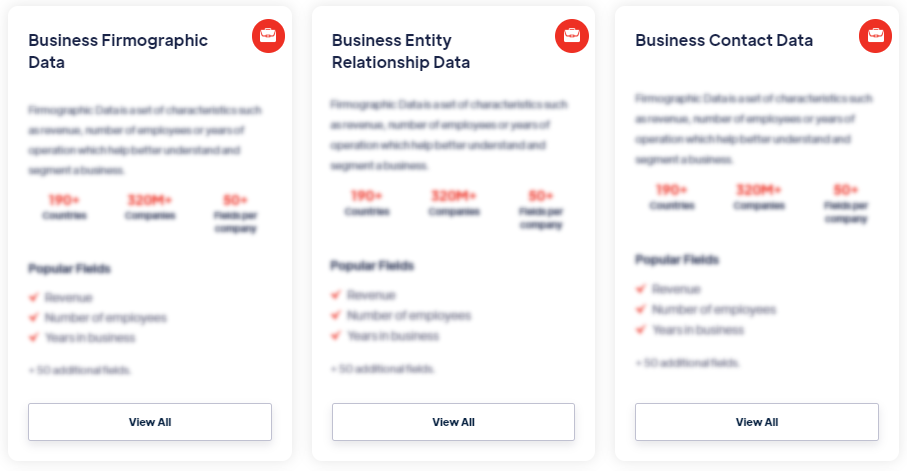Best
Pharmaceutical Drug Sales Data
Products
Pharmaceutical Drug Sales Data refers to the information and statistics related to the sales and distribution of pharmaceutical drugs. It includes data on the sales volume, revenue, market share, and other relevant metrics for specific drugs, therapeutic categories, or pharmaceutical companies. Read more
Our Data Integrations


Request Data Sample for
Pharmaceutical Drug Sales Data

Browse the Data Marketplace

Frequently Asked Questions
1. What is Pharmaceutical Drug Sales Data?
Pharmaceutical Drug Sales Data refers to the information and
statistics related to the sales and distribution of
pharmaceutical drugs. It includes data on the sales volume,
revenue, market share, and other relevant metrics for specific
drugs, therapeutic categories, or pharmaceutical companies.
2. How is Pharmaceutical Drug Sales Data collected?
Pharmaceutical Drug Sales Data is typically collected through
various sources, including pharmaceutical companies,
wholesalers, distributors, and retail pharmacies. These entities
track and report sales data as part of their business
operations. Sales data can be collected through sales
transactions, prescription data, inventory records, and other
sales-related information.
3. What are the benefits of Pharmaceutical Drug Sales
Data?
Pharmaceutical Drug Sales Data provides valuable insights into
the performance and market dynamics of pharmaceutical products.
It helps pharmaceutical companies evaluate the success of their
products, identify market trends, measure market share, and make
informed business decisions. It also helps healthcare providers,
policymakers, and researchers assess the utilization and
accessibility of specific drugs and understand market dynamics.
4. How is Pharmaceutical Drug Sales Data analyzed?
Pharmaceutical Drug Sales Data is analyzed using various
analytical techniques. Common analysis methods include
calculating sales growth rates, market share calculations, trend
analysis, geographic analysis, and segmentation by product or
therapeutic area. Data visualization techniques, such as charts
and graphs, are often employed to present the data in a clear
and meaningful way.
5. How is Pharmaceutical Drug Sales Data used?
Pharmaceutical Drug Sales Data is used by pharmaceutical
companies for market analysis, strategic planning, and product
performance evaluation. It helps them identify opportunities for
growth, understand market trends, and optimize their marketing
and sales strategies. Healthcare providers and policymakers use
this data to monitor drug utilization, assess market
competition, and make informed decisions related to drug
formularies and pricing.
6. What are the limitations of Pharmaceutical Drug Sales
Data?
Pharmaceutical Drug Sales Data has some limitations. It
primarily focuses on the sales volume and revenue generated from
pharmaceutical products, which may not provide a comprehensive
picture of the clinical effectiveness or patient outcomes
associated with those drugs. The data may also be subject to
reporting biases or limitations in terms of data accuracy and
consistency across different sources.
7. What are the emerging trends in Pharmaceutical Drug Sales
Data?
Emerging trends in Pharmaceutical Drug Sales Data include the
integration of real-world evidence (RWE) and advanced analytics.
Real-world evidence leverages data from real-world patient
populations and healthcare settings to complement sales data and
provide insights into the effectiveness and safety of
pharmaceutical products in real-world settings. Advanced
analytics techniques, such as predictive modeling and machine
learning, are being utilized to uncover patterns, predict market
trends, and optimize sales and marketing strategies.
â€
